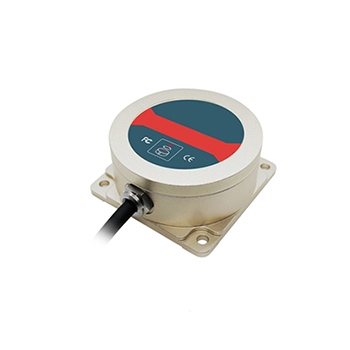Gyroscope Sensor Basics: Component, Features and Applications
The gyroscope sensor is an easy-to-use control system for free-space movement and gesture-based positioning. It was originally applied to helicopter models, and has now been widely used in mobile portable devices such as mobile phones. Since the gyroscope sensor is so important, today we are going to introduce what is a gyroscope sensor to you. We hope that you can have a general idea about its work principle, characteristics and applications after reading.
The principle of the gyroscope is that the direction pointed by the rotation axis of a rotating object does not change its pointed direction when it is not affected by external force. People use it to stay oriented according to this principle. The direction indicated by the shaft is then read in a variety of ways, and the data signal is automatically sent to the control system. We actually use this principle when we ride a bicycle. The faster the wheel turns, the less likely it will fall, because the axle has a force that keeps it level.
Modern gyroscopes are instruments that can accurately determine the orientation of moving objects. It is an inertial navigation instrument widely used in modern aviation, navigation, aerospace and defense industries. The main part of the traditional inertial gyroscope is a mechanical gyroscope, and the mechanical gyroscope has high requirements on the process structure.
When analyzing the motion of the gyro from the point of view of mechanics, it can be regarded as a rigid body, and there is a fulcrum on the rigid body, and the gyro can rotate with three degrees of freedom around this fulcrum. Therefore, the motion of the gyro belongs to the rotational motion of the rigid body around a fixed point. To be more precise, a flywheel rotor that rotates at a high speed around the axis of symmetry is called a gyroscope. The gyroscope is installed on a frame device so that the rotation axis of the gyro has an angular rotation degree of freedom. The whole of this device is called a gyroscope.
The basic components of a gyroscope are:
- Gyroscope rotor. (Synchronous motor, hysteresis motor, three-phase AC motor and other drag methods are often used to make the gyroscope rotor rotate at high speed around the rotation axis.)
- Inner and outer frames or inner and outer rings. (It is the structure that enables the rotational axis of the gyro to obtain the required angular rotational degrees of freedom.)
- Accessories. (Referring to torque motors, signal sensors, etc.)
According to the number of frames and the form of support and the nature of the accessories, the types of gyroscopes are:
Two-degree-of-freedom gyroscope. (There is only one frame, so that the rotation axis of the rotor has one rotational degree of freedom.)
According to the nature of the reaction moment used in a two-degree-of-freedom gyroscope, such gyroscopes can be divided into three types:
- Integrating gyroscope. (The reaction torque it uses is damping torque.)
- Rate gyroscope. (The reaction torque it uses is elastic torque.)
- Unconstrained gyroscope. (It only has inertial reaction torque.)
In addition to mechanical and electrical frame gyroscopes, some new gyroscopes have also appeared, such as electrostatic free-rotor gyroscopes, flexible gyroscopes, and laser gyroscopes.
Three-degree-of-freedom gyroscope. (With two inner and outer frames, so that the rotor axis has two rotational degrees of freedom. When there is no torque device, it is a free gyroscope.)
Characteristics
The main characteristics of the gyro sensor are its stability and precession.
We can find from the ground tops played by children that the high-speed spinning tops can stay vertical without falling down and remain vertical to the ground, which reflects the stability of the tops when they move. The theory that studies the motion characteristics of gyroscopes is a branch of the dynamics of rigid bodies moving around a fixed point. It is based on the inertia of the object and studies the dynamic characteristics of the rotating object. It can be said that the gyroscope sensor is a simple and easy-to-use positioning and control system based on free space movement and gestures.
Applications
Defense industry
The gyroscope sensor was originally applied to the helicopter model, and it has been widely used in mobile portable devices such as mobile phones. More than that, a modern gyroscope is an instrument that can accurately determine the orientation of a moving object, so a gyroscope sensor is an essential control device in modern aviation, navigation, aerospace and defense industrial applications. The gyroscope sensor was named by the French physicist Leon Foucault when he studied the rotation of the earth, and it has been the most convenient and practical reference instrument for the attitude and speed of navigation in aviation and navigation.
Door opener alarm
New application of gyroscope sensor: measure the angle of door opening. When the door is opened at an angle, an alarm sound is issued, or a short message is sent in conjunction with the GPRS module to remind the door to be opened. In addition, the gyroscope sensor integrates the function of the acceleration sensor. When the door is opened, a certain acceleration value will be generated, and the gyroscope sensor will measure the acceleration value. After reaching the preset threshold value, an alarm sound will be issued; or combined with the GPRS module to send a short message to remind the door to be opened. The alarm can also integrate radar sensing measurement function, as long as someone enters the room and moves, it will be measured by radar. Double insurance reminds anti-theft, high reliability, low false alarm rate, very suitable for anti-theft alarm in important occasions.

